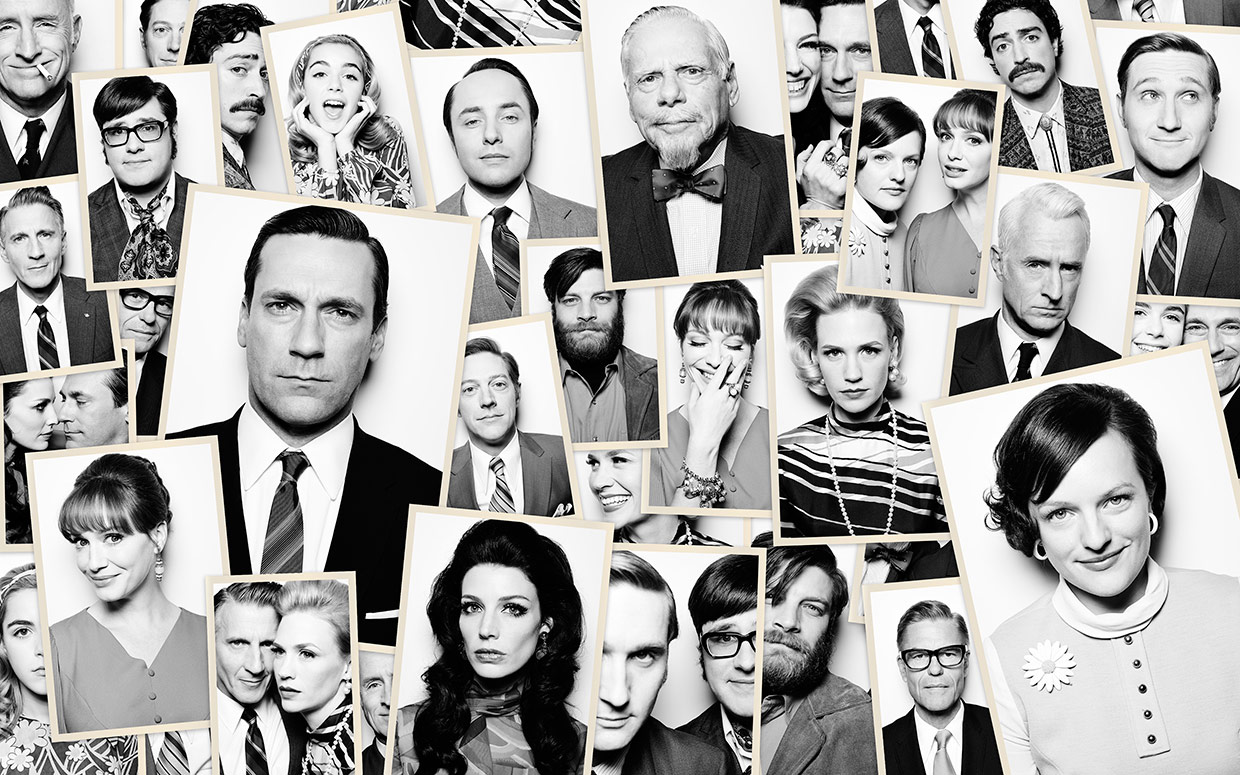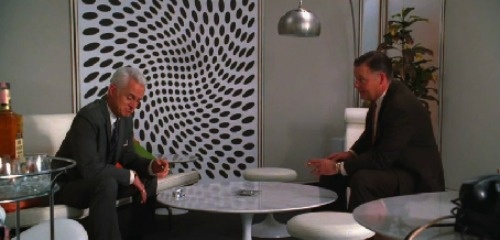
Jan
Diversity Without Pity #19 | Mad Men
[responsivevoice_button voice=”UK English Female” buttontext=”Listen to Post”]
This is a mini-series within Diversity Without Pity that explores diversity within society’s often most privileged group: The heterosexual white male.
In a scene of the Emmy Award-winning series Mad Men a friend offers to read our antihero Don Draper’s future using tarot cards. Don is skeptical. He says, “People see what they want to see.”
Matt Weiner, writer and producer of the series set in an ad agency from the 1960s, makes people see what they want to see. Weiner writes in a sort of ambiguity that allows viewers to project what they do (or don’t) see. For some, it may be a misinterpretation of black women. For others, it’s incredible costumes that transmit more meaning than planned. This is what I see.
I see a series that depicts how hard it is to make progress. We don’t live in the kind of meritocracy that uplifts people like Don Draper, any more than they would lift people like Peggy Olsen. If we do, we get one. We live in a culture where someone would need to lie about growing up poor if it meant they could get ahead.
”I'm Republican, like everyone else in there. But somehow no matter how expensive my cuff links, I feel like the head of a jackass. ~ Conrad Hilton
No diss, but if you’re only seeing Don Draper as a smooth, dapper, boozing, womanizer, you’ve missed the entire point of the show. The series also does something that is rarely seen on prime-time television: how deep poverty can shape an individual.
Don is actually Dick Whitman, born from a prostitute, and raised in a brothel in Depression-era Pennsylvania. This is discovered well into the first season and becomes a constant theme throughout the series. From his relationship to his patrician wife Betty, to his relationship with money, Don/Dick’s background is rooted in deep shame.
But his background also informs a deeply rooted sense of integrity. For example, young Dick Whitman learns a valuable lesson from a drifter who sets upon his childhood home looking for work. Drifters have a set of symbols they leave for the next drifter. After the drifter does some work for Dick’s father, he refuses to pay the man. Instead, the man walks away. But before he does, he leaves the symbol for “a dishonest man lives here.”
Don quietly pays Pete Campbell’s partner percentage as a return to favor for Pete called off the FBI dogs on behalf of a major aviation contract, which — if they found out Don’s true past — could’ve threatened Don’s livelihood. For Dick/Don, he never wanted to betray the trust of anyone’s integrity. He never wanted to be labeled as a dishonest man.
But a part of me deeply identifies with Don. Someone determined to make something of his life, and move forward. One who is heavily inspired by movies as meaningful humanizing stories. An understanding that we buy things because they speak to us. And a constant wanderlust to seek out more. I sympathize with him, and throughout the series, I root for him to find himself. Only because a part of him has validated me too.
In preparation for this essay, I rewatched the entire series. I tried to keep track of who was a sexist/racist/homophobe and who wasn’t. After awhile, I gave up asking, “who is or who isn’t a racist, sexist homophobe” because those are the wrong questions. Instead, I needed to ask, “Who is contributing or conceding to the systematic inequities in their workplace?” By that measure, it’s everyone.
”You're political whether you like it or not. ~ Abe to Peggy
Don may see potential in a young woman like Peggy, but off-camera, he’s made a joke about a “Mongoloid.” Pete may see Martin Luther King as a great man, but is disgusted when he runs into his father-in-law at a brothel with “the biggest, blackest prostitute you have ever seen.” Roger Sterling made casually racist jokes about Dawn, SCDP’s first black receptionist, but then expresses surprise and remorse when the company’s second black receptionist, Shirley, doesn’t want to migrate with SC+P over to McCann Erickson. She says that the advertising world is “not an inviting place for everyone.” And Burt, for all his claims about supporting the NAACP, did not want Dawn seated so visibly at the office entrance and asked that she be placed elsewhere.
”At the restaurant, you're working. Taking people out to dinner. Wining and whoring... No job for a white man. ~ Pete Campbell's father
The common thread is that all these people gave themselves moral license to let some in, but not others; to accept some people but not others; appear to make some people comfortable, so long as it’s not said in front of them. This is the kind of honesty I need to see in fictional storytelling. Because that’s what it’s really like working in professional spaces.
I’d always see the Sixties from the perspectives of the grungy, tripped-out hippies or the social justice, civil rights radicals. Only until Mad Men did I see a dedicated fictional account of that same time period from the comfortable, corporate, right-leaning populace. In which civil rights sat at their periphery. In which hippies were located at a place you visited downtown. And cool could be bought without any of the downsides.
Confusing Modernism with Progressivism
Before watching Mad Men, I studied different eras of art, design, and architecture separate from the political times in which they were created. Even worse, I studied these eras under the guise that only liberal-leaning people liked them. Until I watched a series featuring WWII vet./account executive like Roger Sterling, it never occurred to me that the guy who liked mid-century modern furniture, Saul Bass, and Op Art might have also voted for Barry Goldwater or propped up the tobacco industry. But if you look at the economics of the times — who can afford to indulge in the latest in art and design — it’s likely going to be a white man with a lot of money.
It is a mistake to assume that because everything looks progressive, does not mean it is politically progressive.
Ken Burns once said that history has a way of tricking us into thinking that because we’ve survived it, we’re somehow better. We’d like to tell ourselves that because we have a few representative faces, that we’re more integrated than we’ve ever been. And those places are comfortable for everyone. The truth is there are still a lot of places like Sterling Cooper, SCDP, and SC+P. Where there are a lot of white people, and everyone else is made uncomfortable. Where the white women insist on only a tacit form of solidarity, but collude and stay silent. Where the office interiors look modern and cool, but someone will scrawl “All Lives Matter” on your office wall.
This is who we really are. No tea no shade, but this is really us. And I appreciate someone being honest about that.
Diversity Without Pity is a blog series from IDSL, highlighting media that uses smart design, and considers the diversity of it’s casting without selling the viewer or consumer, short.



